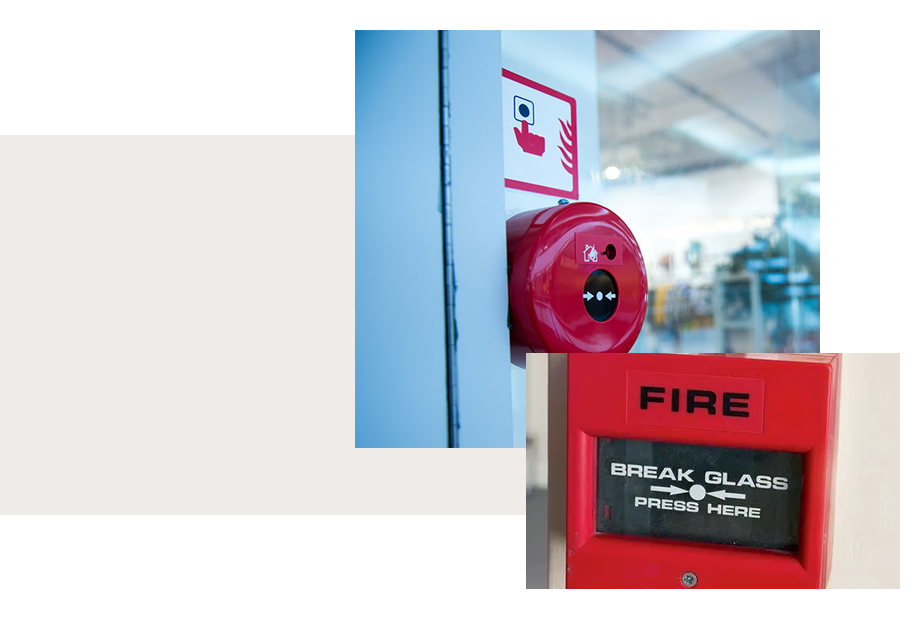
FIRE ALARMS
Fire Alarm Categories for Commercial Premises
There are five categories of life-saving fire alarm systems each suited to different environments and applications. A fire alarm system can differ in price considerably depending on the complexity of the system. For example, we install a single panel with a detector and sounder for a small commercial customer, through to a fully addressable fire alarm system for a building of multiple-occupancy. Our guide below should shed some light on the differences between the four main life protection categories and the environments they are best suited to.
L1 Fire Alarm System
An L1 fire alarm system provides the highest standard for protection of life. Fire alarm detectors are installed in all rooms and areas of the building, including roof spaces and voids. Some areas need not be protected if they are of low fire risk such as stairways, lobbies and small cupboards. Typical installations for an L1 system include residential care premises and large office blocks.
L2 Fire Alarm System
An L2 fire alarm system is designed to give an early warning of fire to occupants beyond the room in which the fire starts and to provide early detection in areas of high risk. It is our job as fire alarm designers to look at your building plan and recommend extra detection for high risk areas. Example areas of high risk could include boiler rooms, plant rooms and other areas with heavy plant machinery.
L3 Fire Alarm System
The purpose of an L3 fire alarm system is to provide warning to occupants beyond the room in which the fire starts, so that they use escape routes, such as corridors and staircases, before they are smoke-filled. Fire alarm detectors should be installed in all escape routes and all rooms that open onto an escape route.
L4 Fire Alarm System
An L4 fire alarm system provides automatic fire detection within escape routes comprising circulation areas and spaces, such as corridors and stairways. An L4 system would not satisfy the requirements of legislation in buildings in which people sleep.
L5 Fire Alarm System
Often the requirement for an L5 fire alarm system is based on recommendations from a fire risk assessment. This is a custom category and relates to special client requirements for their premises. The details need to be specified by a qualified fire engineer. For example, this could be a fire extinguishing system triggered by automatic detection.
